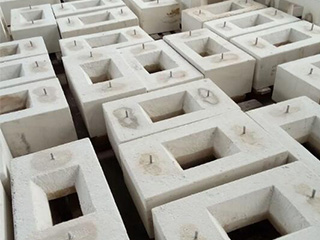Fiber is a versatile and important material that is used in a wide range of industries, from textiles to construction. In this article, we will provide a comprehensive overview of fiber, including its properties, types, and applications.
Properties of Fiber
Fiber is a material that is characterized by its high strength, durability, and flexibility. It is composed of long, thin strands that are tightly woven or twisted together to form a cohesive structure. The properties of fiber can vary depending on the type of fiber and its intended use, but some common characteristics include:
1.High tensile strength: Fiber is able to withstand high levels of tension without breaking or stretching.
2.Resilience: Fiber is able to recover its original shape after being stretched or deformed.
3.Flexibility: Fiber is able to bend and twist without breaking.
4.Water resistance: Many types of fiber are naturally resistant to water and moisture.
5.Thermal insulation: Fiber is often used for its insulating properties, as it is able to trap air and prevent heat loss.

Types of Fiber
There are many different types of fiber, each with its own unique properties and characteristics. Some common types of fiber include:
1.Natural fibers: These are fibers that are derived from natural sources, such as plants or animals. Examples include cotton, wool, silk, and hemp.
2.Synthetic fibers: These are fibers that are made from man-made materials, such as nylon, polyester, and acrylic.
3.Mineral fibers: These are fibers that are made from minerals, such as asbestos, rock wool, and fiberglass.
4.Specialty fibers: These are fibers that are designed for specific applications, such as carbon fiber, which is used for its high strength and low weight.
Applications of Fiber
Fiber is used in a wide range of applications across many different industries. Some common uses of fiber include:
1.Textiles: Fiber is used to make a wide range of textiles, including clothing, upholstery, and bedding.
2.Construction: Fiber is used as an insulator in construction materials, such as insulation batts and boards.
3.Automotive: Fiber is used in the production of automotive components, such as brake pads, seat belts, and tires.
4.Aerospace: Fiber is used in the production of aerospace components, such as airplane wings and fuselages.
5.Electronics: Fiber is used in the production of electronic components, such as fiber optic cables.
6.Medical: Fiber is used in the production of medical devices, such as surgical implants and wound dressings.
7.Packaging: Fiber is used in the production of packaging materials, such as paper and cardboard.
Sustainability of Fiber
Sustainability is an increasingly important consideration when it comes to the use of fiber. Many types of fiber, such as cotton and wool, are renewable resources that can be sustainably grown and harvested. However, other types of fiber, such as synthetic fibers, are made from non-renewable resources and can have negative environmental impacts.
To address these concerns, there is a growing trend towards the use of sustainable and eco-friendly fibers. Some examples of sustainable fibers include:
1.Organic cotton: Cotton that is grown without the use of pesticides and other harmful chemicals.
2.Bamboo: A fast-growing plant that can be harvested sustainably and used to make a range of textiles.
3.Recycled polyester: Polyester that is made from recycled plastic bottles and other materials.
4.Hemp: A plant that is naturally resistant to pests and requires little water and fertilizer to grow.
Conclusion
In conclusion, fiber is a versatile and important material that is used in a wide range of applications across many different industries. It is characterized by its high strength, durability, and flexibility, and can be made from natural or synthetic materials. To address concerns
about sustainability, there is a growing trend towards the use of sustainable and eco-friendly fibers. Understanding the properties and types of fiber, as well as its applications and sustainability considerations, is essential for anyone working with or interested in this important material.
Overall, fiber is a fascinating material that has played a vital role in human history and continues to be a critical component of many modern products and industries. Whether you are a designer, engineer, or simply someone interested in the science of materials, learning about fiber and its properties and applications can provide valuable insights into the world around us.
Contact: Mgr. Han
Phone: 0086-13589497465
Email: 1255953279@qq.com
Add: Industrial Area of Lingzi Town,Zichuan District,Zibo City, Shandong,China